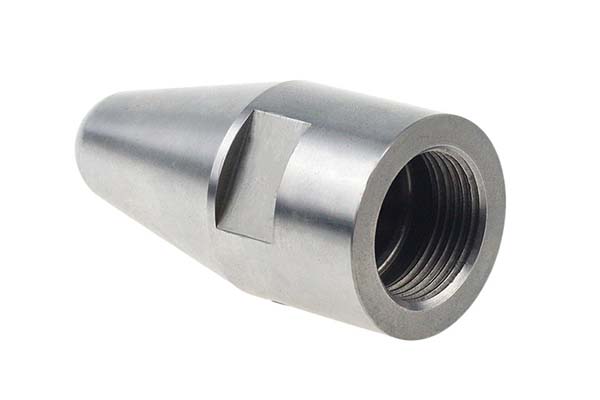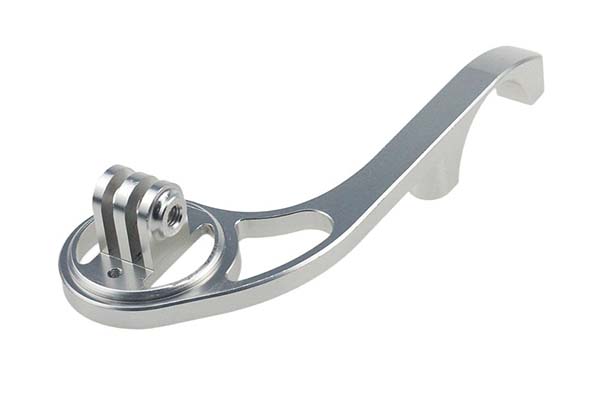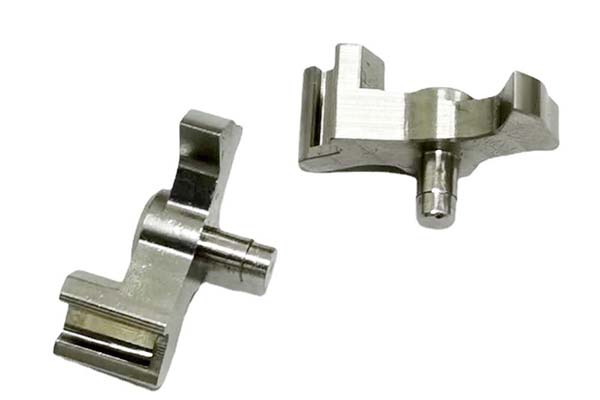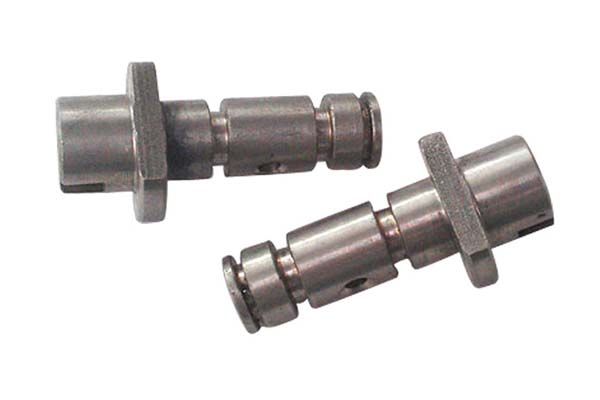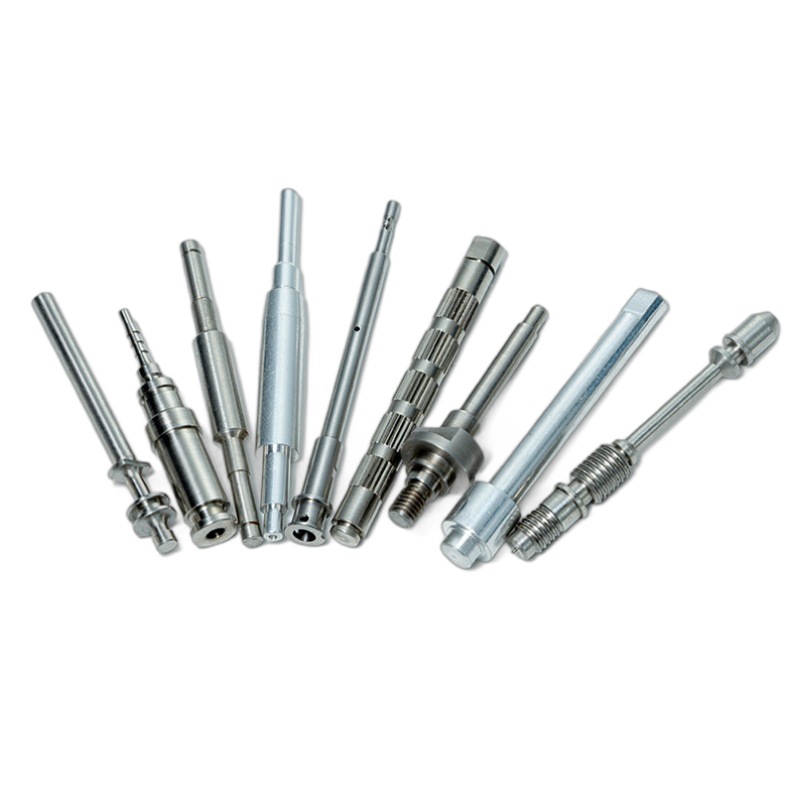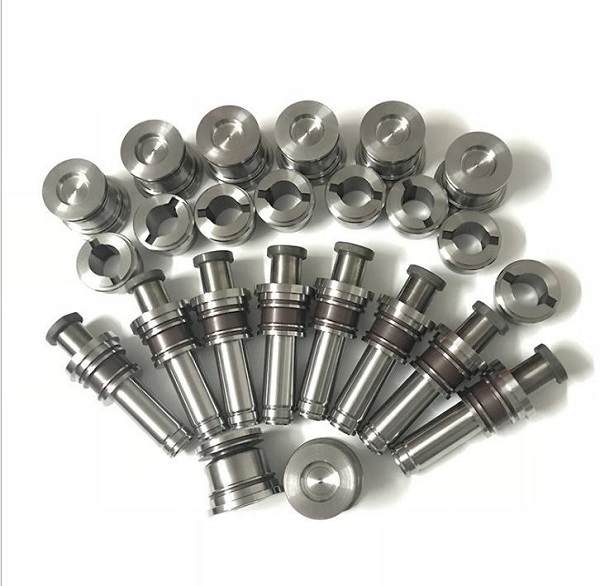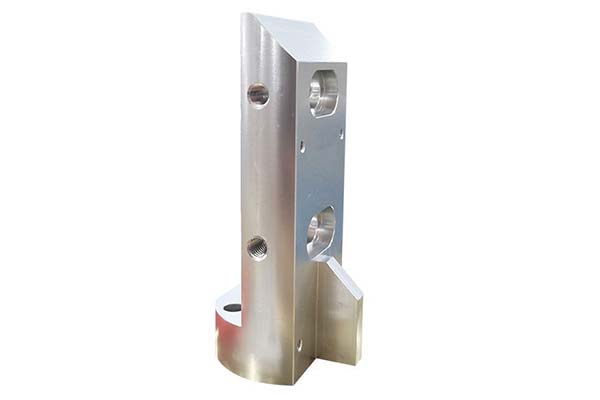Manufacturers seeking a cost-effective, corrosion-resistant material often turn to SS430 stainless steel. As a ferritic stainless steel, it offers unique advantages like inherent magnetic properties and a lower cost than austenitic grades, but machining it comes with distinct challenges. Its high chromium content enhances corrosion resistance but increases brittleness, leading to chip fragmentation and potential surface defects. Additionally, its low carbon content reduces work hardening compared to austenitic steels, but this is offset by lower ductility, which can cause tool chipping during high-speed operations. Distinguishing its capabilities from austenitic grades like SS304 or other ferritic alloys is crucial to avoid performance mismatches in applications. This guide addresses these pain points, providing proven strategies to optimize CNC machining SS430 for efficiency, quality, and reliability in both industrial and consumer applications.
Material Overview of SS430
SS430 stainless steel is a ferritic alloy valued for its balance of corrosion resistance, affordability, and magnetic properties:
- Mechanical properties: It has a tensile strength of 450-550 MPa, yield strength of 205 MPa, and hardness of 180-230 HB in the annealed state. Its ductility (20-25% elongation) is lower than austenitic grades but sufficient for most forming and machining operations.
- Corrosion resistance: Good in mild environments, including atmospheric conditions and fresh water, thanks to its 16-18% chromium content. It resists oxidation at temperatures up to 800°C but is less resistant to acids and chlorides than SS304.
- Magnetic properties: Inherently magnetic, making it ideal for applications requiring magnetic responsiveness, such as sensor components and magnetic fixtures.
- Chemical composition: Contains 16-18% chromium, 0.75% maximum nickel, 0.12% maximum carbon (low carbon content), and trace amounts of manganese and silicon. This composition minimizes carbide precipitation, enhancing weldability and corrosion resistance.
- Workability: Moderate machinability, with lower work hardening than austenitic grades but higher brittleness, requiring careful cutting parameters to avoid chip-related defects.
- Weldability: Limited compared to austenitic steels due to grain growth in the heat-affected zone, which can increase brittleness. Pre- and post-weld annealing is often recommended for critical applications.
These traits make SS430 ideal for cost-sensitive applications like household appliances, automotive trim, and architectural components where moderate corrosion resistance and magnetic properties are required.
CNC Machining Processes for SS430
Core Machining Operations
CNC machining SS430 benefits from its lower work hardening tendency but requires adjustments to handle brittleness:
- CNC milling: Effective for shaping appliance panels and architectural trim. Using medium cutting speeds reduces chip fragmentation, while climb milling minimizes tool deflection on thin sections.
- CNC turning: Suitable for cylindrical parts like valve stems and sensor housings. Moderate feed rates balance material removal and surface finish, avoiding excessive tool wear.
- CNC drilling and CNC boring: Challenging due to brittleness; sharp tools and reduced feed rates prevent workpiece cracking, especially in thin-walled components.
- Machining centers and multi-axis machining: Enhance efficiency for complex parts like automotive brackets, ensuring consistent dimensional accuracy across magnetic and non-magnetic components.
Optimal Cutting Parameters
| Operation | Cutting Speed (m/min) | Feed Rate (mm/rev) | Depth of Cut (mm) |
| CNC milling (carbide) | 120-200 | 0.1-0.2 | 1-3 |
| CNC turning (carbide) | 150-250 | 0.15-0.3 | 1.5-4 |
| CNC drilling (carbide) | 100-180 | 0.08-0.15 | 1-2.5 |
These parameters leverage SS430’s lower work hardening, allowing higher cutting speeds than austenitic grades. However, feed rates are reduced by 10-15% compared to SS304 to mitigate brittleness-related issues.
Tool Selection and Tooling for SS430
Choosing the Right Tools
Tool selection for CNC machining SS430 focuses on handling brittleness and maximizing edge retention:
- Cutting tools: Carbide tools are preferred, with coated carbide (TiAlN or TiN) offering best performance. High-speed steel tools work for low-volume applications but wear faster due to SS430’s abrasive chromium content.
- Tool coatings: TiAlN coatings reduce friction and heat buildup, extending tool life by 30-50% compared to uncoated carbide. TiN coatings are a cost-effective alternative for less demanding operations.
- Tool geometry: Negative rake angles (0-5°) improve edge strength, reducing chipping when machining brittle SS430. honed edges (0.02-0.05 mm) minimize surface defects.
- Tool holders: Rigid holders with minimal runout reduce vibration, critical for maintaining surface finish in high-speed milling of thin SS430 sheets.
- Coolant delivery systems: Flood coolant or mist systems reduce heat and flush chips, preventing re-cutting and surface contamination in precision parts.
Chip Control Strategies
Poor chip control in SS430 leads to surface scratches and tool damage. Effective strategies include:
- Using tools with narrow chip breakers designed for ferritic steels to control fragmented chips, especially in turning operations.
- Adjusting cutting speeds to promote short, broken chips—avoiding long, stringy chips that can 缠结工具 and cause defects.
- Implementing chip conveyors with high-speed removal to prevent chip accumulation, which can scratch finished surfaces in batch production.
Surface Finish and Quality Control
Achieving Desired Surface Characteristics
SS430’s surface finish is critical for both appearance and corrosion resistance, as rough surfaces can trap contaminants:
- Surface roughness: Achievable Ra values range from 0.8 μm (finish machining) to 3.2 μm (roughing). Appliance trim often requires Ra ≤ 1.6 μm for aesthetic appeal, while industrial components may accept Ra ≤ 3.2 μm for functional use.
- Surface finish requirements: Architectural panels benefit from smooth finishes (Ra ≤ 1.2 μm) to enhance paint adhesion, while automotive trim needs consistent finishes to match adjacent components.
- Finishing processes: Polishing improves aesthetics and corrosion resistance, while grinding achieves tight tolerance surfaces (±0.005 mm) for precision parts like sensor housings.
Quality Control Measures
- Inspection methods: Coordinate Measuring Machines (CMM) verify dimensional accuracy, while profilometers check surface roughness (Ra, Rz). Magnetic particle testing identifies surface cracks in critical components.
- Quality control standards: Compliance with ASTM A240 (sheet/plate) and ASTM A276 (bars) ensures material consistency, including chromium content and corrosion resistance.
- Surface defects to monitor: Chips and burrs are common due to SS430’s brittleness. Electrochemical finishing removes these defects, improving both appearance and performance.
Heat Treatment and Post-Machining Processes
Heat Treatment for SS430
SS430 requires specific heat treatment to optimize machinability and reduce brittleness:
- Annealing: Heating to 760-815°C, followed by slow cooling, softens the material (to 180-200 HB) and improves ductility, making it easier to machine. This process also relieves internal stresses from cold working.
- Stress relief annealing: Heating to 300-500°C for 1-2 hours reduces machining stresses, preventing distortion in large parts like appliance panels during subsequent processing.
Post-Machining Processes
- Post-machining cleaning: Alkaline cleaning removes coolant residues and chips, preventing staining that can compromise corrosion resistance.
- Passivation: A nitric acid treatment enhances the chromium oxide layer, boosting corrosion resistance by 20-30% in humid environments—critical for outdoor architectural applications.
- Painting or coating: Often applied to SS430 parts for enhanced aesthetics and corrosion protection, especially in automotive and architectural uses where appearance is key.
Applications of SS430 Machined Parts
SS430 stainless steel excels in cost-sensitive applications requiring moderate corrosion resistance and magnetic properties:
- Automotive parts: Trim, exhaust system components, and sensor housings—leveraging its magnetic properties and resistance to high underhood temperatures.
- Household appliances: Refrigerator door liners, washing machine drums, and oven trim—offering a balance of corrosion resistance and affordability.
- Architectural applications: Panels, trims, and fasteners—providing an attractive, durable finish for buildings and structures.
- Industrial machinery: Valves, pumps, and brackets—withstanding mild industrial environments at a lower cost than austenitic grades.
- Food processing equipment: Mixers and conveyors—resisting food acids and offering easy cleaning, though not suitable for high-chloride environments.
In refrigerator components, for example, SS430 provides comparable corrosion resistance to SS304 at 20-30% lower cost, making it a preferred choice for budget-conscious manufacturers.
Technical Specifications and Standards
Adhering to industry standards ensures SS430 parts meet performance requirements:
- ASTM standards: ASTM A240 (sheet/plate), ASTM A276 (bars), and ASTM A312 (tubing) define chemical composition and mechanical properties for SS430.
- ISO standards: ISO 15510 covers ferritic stainless steels, with specifications aligning closely with SS430’s properties.
- Machining tolerances: Achievable tolerances of ±0.01 mm for small parts and ±0.05 mm for large components, with tighter tolerances possible via post-machining grinding.
- Quality certifications: Compliance with ISO 9001 ensures consistent manufacturing processes, while food-grade certifications (like FDA 21 CFR 177.2410) validate suitability for food contact applications.
Challenges and Solutions in Machining SS430
Overcoming Key Machining Challenges
CNC machining SS430 presents unique challenges, but targeted solutions yield reliable results:
- Brittleness: SS430’s low ductility can cause chip fragmentation and surface cracking. Using sharp edges for cutting and reduced feed rates (10-15% lower than SS304) minimizes these issues.
- Tool wear: High chromium content increases abrasion, leading to faster tool dulling. AlTiN-coated carbide tools reduce wear by 30-50% compared to uncoated tools, extending tool life.
- Surface defects: Chips and burrs are common due to brittle fracture. Implementing secondary deburring operations (like barrel finishing) ensures smooth surfaces in critical applications.
- Vibration: Thin SS430 sheets are prone to vibration during machining, causing poor surface finish. Using rigid fixturing and low-frequency cutting parameters stabilizes the workpiece.
- Heat generation: While less than austenitic grades, heat can still cause localized softening. Coolant directed at the cutting zone reduces heat and prevents surface discoloration.
Cost and Efficiency Considerations
Balancing Performance and Cost
CNC machining SS430 offers cost advantages over austenitic grades, with strategic choices further optimizing efficiency:
- Machining cost: 20-30% lower than SS304 due to faster cutting speeds and reduced tool wear, making it ideal for high-volume production.
- Tool cost: TiAlN-coated carbide tools cost 10-20% more than uncoated tools but reduce replacement frequency by 30-50%, lowering total tooling expenses.
- Production rate: Typical rates of 30-50 parts per hour for small components, 10-15% higher than SS304 due to lower work hardening and faster cutting speeds.
- Efficiency improvements: High-speed machining centers with rigid spindles reduce cycle times by 15-20% in mass production of SS430 parts, such as appliance components.
Comparison with Other Materials
How does SS430 compare to similar materials?
| Material | Corrosion Resistance | Magnetic Properties | Machinability (Relative) | Cost (Relative) |
| SS430 | Moderate | Magnetic | Good (85%) | Low |
| SS304 | Excellent | Non-magnetic | Good (80%) | Medium |
| SS440A | Good | Magnetic | Fair (70%) | Medium |
| Carbon Steel | Poor | Magnetic | Very Good (90%) | Very Low |
| Aluminum 6061 | Good | Non-magnetic | Very Good (95%) | Medium-Low |
- SS430 vs. SS304: SS430 is 20-30% cheaper but offers lower corrosion resistance, making it suitable for mild environments where cost is critical. Its magnetic properties are a key differentiator for sensor and fixture applications.
- SS430 vs. SS440A: SS430 is more machinable and less brittle than SS440A, though SS440A offers higher hardness. SS430 is preferred for general-purpose parts, while SS440A is better for wear-resistant components.
- SS430 vs. Carbon Steel: SS430 provides superior corrosion resistance and a more attractive finish, justifying its higher cost in applications like appliances and architecture.
Yigu Technology’s Perspective
At Yigu Technology, we specialize in CNC machining SS430 for appliance and automotive clients. Our data shows that using AlTiN-coated carbide tools with optimized feeds reduces tool wear by 40% compared to standard setups. We recommend annealing SS430 before machining to improve ductility and reduce brittleness-related defects. For architectural parts, we achieve Ra ≤ 0.8 μm finishes through precision polishing, ensuring aesthetic appeal and corrosion resistance. Our compliance with ASTM A240 ensures consistent material quality, making SS430 components reliable and cost-effective for a wide range of industrial and consumer applications.
FAQ
- What makes SS430 suitable for household appliances?
SS430 offers a balance of moderate corrosion resistance, affordability, and magnetic properties, making it ideal for refrigerator liners, oven trim, and washing machine parts. Its low cost compared to austenitic grades helps manufacturers meet budget constraints without sacrificing durability.
- How does SS430’s machinability compare to SS304?
SS430 is easier to machine in terms of work hardening but more brittle, requiring slower feed rates to avoid chipping. It allows 10-15% faster cutting speeds than SS304, reducing cycle times, and its lower cost makes it attractive for high-volume production.
- Can SS430 be used in food processing applications?
Yes, SS430 is suitable for mild food environments (e.g., dry goods or non-acidic foods) due to its corrosion resistance. However, it is not recommended for high-chloride or acidic foods, where austenitic grades like SS316 offer better performance.
